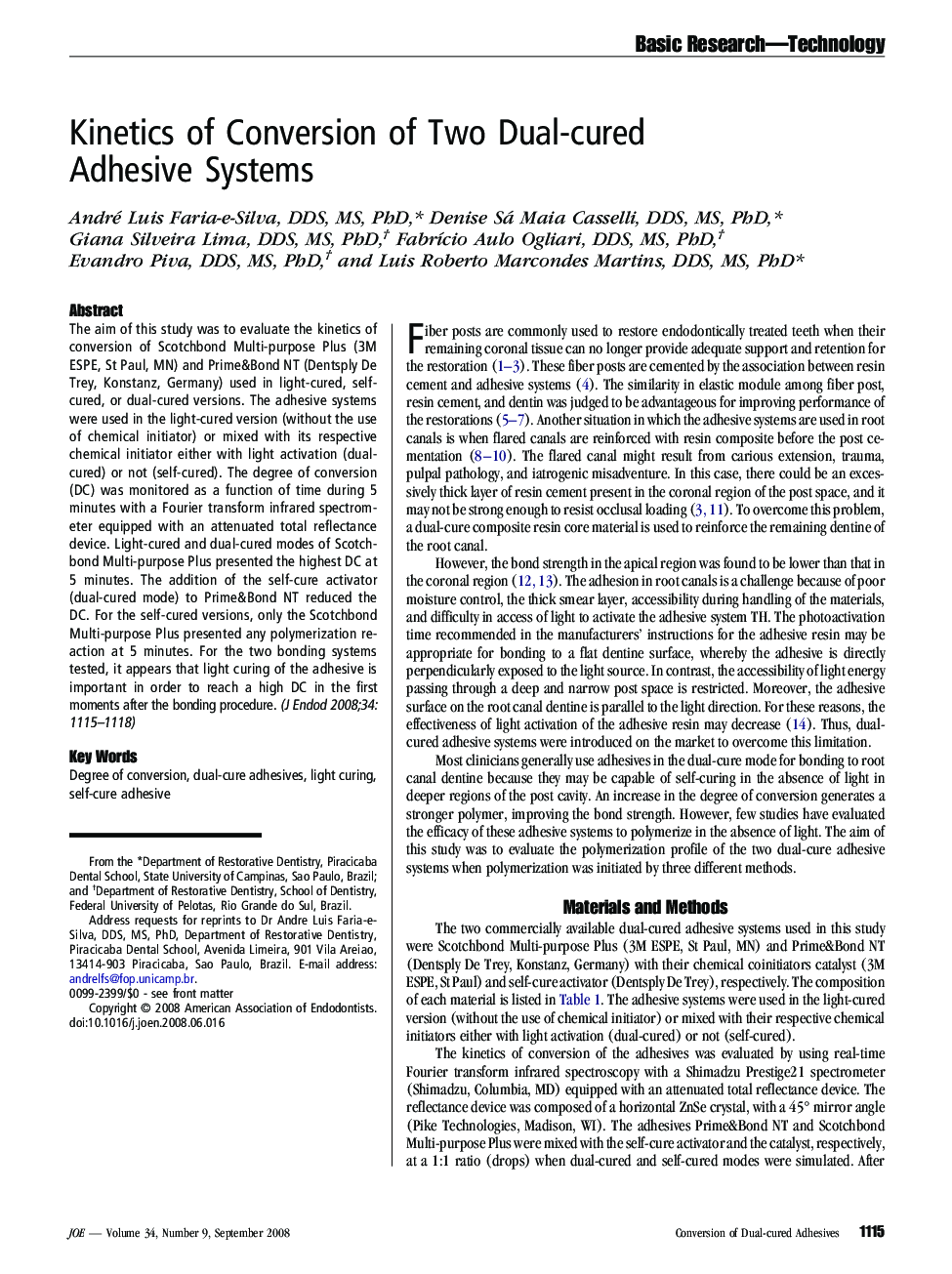| Article ID | Journal | Published Year | Pages | File Type |
|---|---|---|---|---|
| 3150766 | Journal of Endodontics | 2008 | 4 Pages |
Abstract
The aim of this study was to evaluate the kinetics of conversion of Scotchbond Multi-purpose Plus (3M ESPE, St Paul, MN) and Prime&Bond NT (Dentsply De Trey, Konstanz, Germany) used in light-cured, self-cured, or dual-cured versions. The adhesive systems were used in the light-cured version (without the use of chemical initiator) or mixed with its respective chemical initiator either with light activation (dual-cured) or not (self-cured). The degree of conversion (DC) was monitored as a function of time during 5 minutes with a Fourier transform infrared spectrometer equipped with an attenuated total reflectance device. Light-cured and dual-cured modes of Scotchbond Multi-purpose Plus presented the highest DC at 5 minutes. The addition of the self-cure activator (dual-cured mode) to Prime&Bond NT reduced the DC. For the self-cured versions, only the Scotchbond Multi-purpose Plus presented any polymerization reaction at 5 minutes. For the two bonding systems tested, it appears that light curing of the adhesive is important in order to reach a high DC in the first moments after the bonding procedure.
Keywords
Related Topics
Health Sciences
Medicine and Dentistry
Dentistry, Oral Surgery and Medicine
Authors
André Luis DDS, MS, PhD, Denise Sá Maia DDS, MS, PhD, Giana Silveira DDS, MS, PhD, FabrÃcio Aulo DDS, MS, PhD, Evandro DDS, MS, PhD, Luis Roberto Marcondes DDS, MS, PhD,
